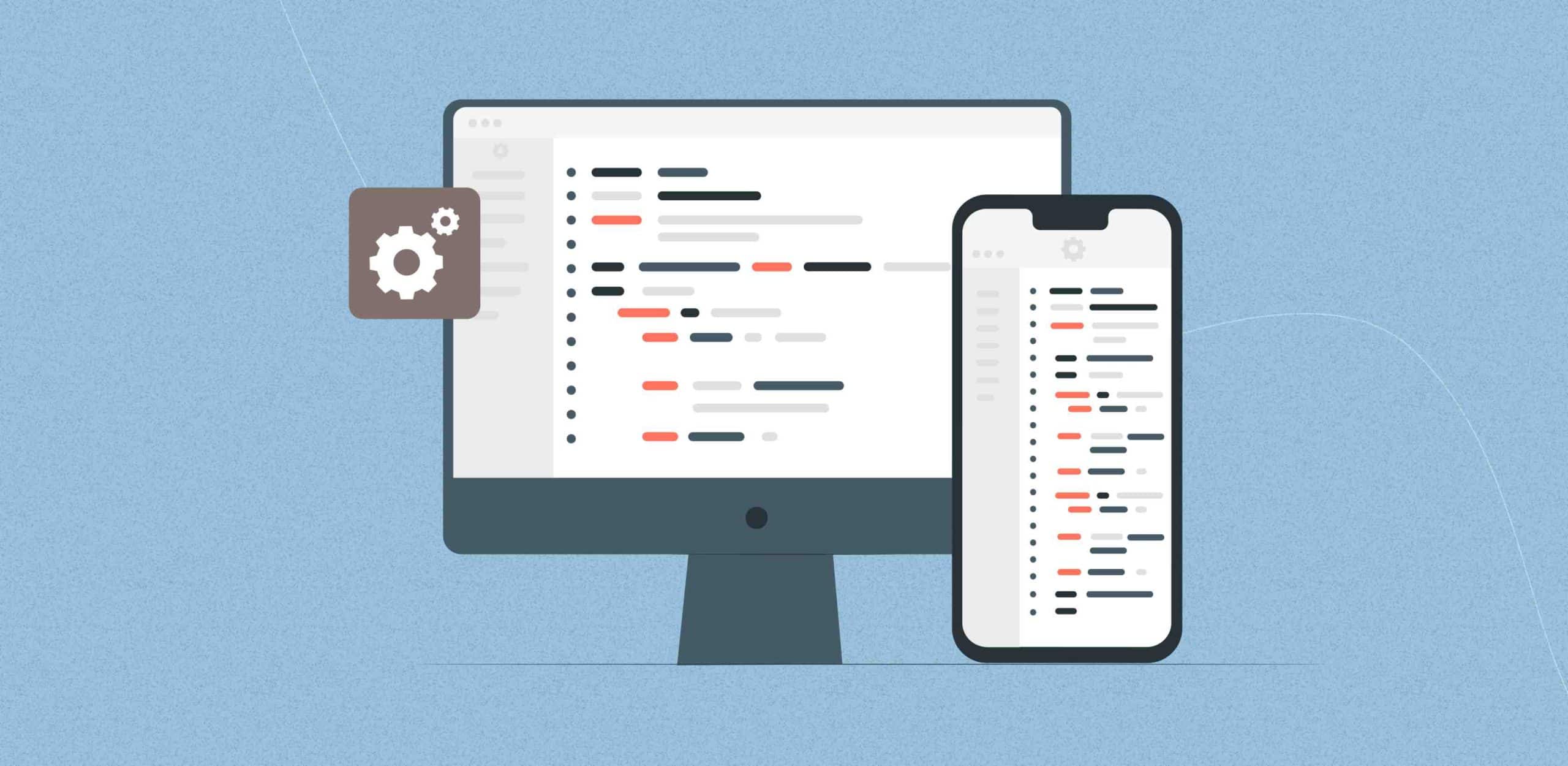Custom software is becoming an essential tool for businesses looking to address their unique challenges and requirements. As companies strive to stand out in competitive markets, many are turning to custom software development to build solutions that align perfectly with their specific workflows, goals, and customer expectations.
Unlike pre-packaged software, custom software is designed specifically for your organization, giving you full control over features, integrations, and scalability. However, starting a custom software development project requires careful planning and a clear strategy to ensure success.
In this guide, we’ll walk you through a comprehensive, step-by-step approach to planning your custom software project to help you achieve the best results.
A Brief Note on Custom Software Development
Custom software development refers to the process of designing, building, and maintaining software that addresses a specific problem or requirement for a particular business or user group. A well-planned custom software project can transform how businesses operate by automating processes, increasing efficiency, and enabling innovation. However, success depends on a clear understanding of your needs, the right development team, and a strategic plan to guide your project from concept to deployment.
When done right, custom software development delivers:
- Tailored solutions that address specific challenges
- Flexibility to scale and adapt as the business grows
- Seamless integration with other tools and systems
- A competitive edge by offering unique features
To know more about Custom Software Development read the blog ‘Custom Software Development – An Ultimate Guide for 2024.’
Custom Software Development in Digital Transformation
Custom software development plays a pivotal role in digital transformation. As businesses evolve, the need for software that can keep up with changing demands becomes crucial. With off-the-shelf solutions, companies often struggle with limitations that prevent them from truly leveraging the power of digital tools.
Digital transformation requires businesses to rethink their processes, customer experiences, and products to stay relevant in today’s fast-paced environment. Custom software solutions can bridge the gap between existing operations and future needs. By automating workflows, improving data management, and enhancing customer experiences, custom software development allows businesses to take full advantage of digital transformation.
Here’s how custom software contributes to digital transformation:
Efficiency and Automation
One of the primary advantages of custom software is its ability to automate repetitive tasks and optimize business workflows. In any business, employees often spend time performing manual tasks that are prone to human error, such as data entry, report generation, and repetitive administrative processes. With custom software, these tasks can be automated, reducing errors and freeing up valuable time for employees to focus on more strategic, higher-level work.
For example, a retail company can use custom software to automatically manage inventory, send alerts for low stock, and generate reports on sales trends. Similarly, a manufacturing business could automate production schedules and equipment maintenance tracking, reducing downtime and improving operational efficiency.
By streamlining workflows, custom software not only boosts productivity but also reduces the likelihood of mistakes caused by manual processes. This increased accuracy leads to better decision-making, faster turnaround times, and overall improved operational performance. Moreover, with tasks automated, businesses can scale faster, focusing their human resources on innovation and growth.
Customer-centric Solutions
Custom software allows businesses to put their customers at the center of their digital transformation journey. It can be designed specifically with the customer’s journey in mind, offering personalized experiences that enhance engagement and satisfaction. Off-the-shelf software often lacks the ability to cater to individual customer needs, resulting in generic solutions that fail to create meaningful interactions.
For example, an e-commerce company could develop custom software that tailors product recommendations based on a customer’s browsing history and previous purchases. A service-based company could build a client portal that provides customers with real-time updates on their projects or services, improving communication and transparency.
Moreover, custom software can help businesses track and analyze customer behavior more effectively, leading to more relevant marketing campaigns, better product offerings, and improved customer service. With the ability to adapt to changing customer preferences, custom software enhances customer loyalty and ensures businesses remain competitive in an increasingly personalized marketplace.
Here is an article on Custom Software Development for Predictive Analytics.
Data Management and Insights
In today’s data-driven world, businesses rely on accurate and timely data to make informed decisions. Custom software provides organizations with complete control over their data collection, management, and reporting processes. Instead of relying on generic reporting features offered by off-the-shelf software, custom solutions allow businesses to design specific data structures and reporting formats that align with their unique requirements.
With custom software, businesses can gather data from various sources—such as customer interactions, sales transactions, or employee performance—and compile it into one centralized platform. This ensures that the data is easily accessible, up-to-date, and organized in a way that supports decision-making. For instance, a healthcare organization could develop a custom patient management system that consolidates patient records, lab results, and treatment plans, giving healthcare providers a holistic view of each patient’s health.
Additionally, custom software enables advanced data analytics, allowing businesses to derive insights from the data they collect. Through tailored dashboards and reporting features, organizations can monitor key performance indicators (KPIs), identify trends, and gain a competitive edge by making proactive decisions. This enhanced data management system empowers businesses to optimize their operations and respond swiftly to changes in the market.
Scalability
Scalability is one of the most significant advantages of custom software. As your business grows and evolves, you need software that can grow with you. Off-the-shelf software often has limitations in terms of the number of users, features, or data it can handle, forcing businesses to either upgrade to a more expensive plan or invest in additional software solutions. This can lead to fragmented systems, where different departments use different tools, creating inefficiencies and increasing costs.
Custom software is built with your business’s future needs in mind, allowing you to scale seamlessly as your operations expand. Whether you’re adding new users, expanding into new markets, or integrating additional features, custom software can be designed to accommodate these changes without requiring significant maintenance or expensive upgrades.
For example, a growing financial services company might start with custom software that manages client accounts and financial reporting. As the business expands, the software can be scaled to include features such as automated regulatory compliance checks, advanced reporting capabilities, or integrations with third-party financial platforms.
Step-by-step Custom Software Development Process
Planning a custom software project involves far more than just writing code. It requires a strategic approach that encompasses understanding your business goals, gathering requirements, managing budgets, selecting the right team, and ensuring effective communication and testing. Here’s a detailed look at the step-by-step custom software development process to help guide you through every phase of the project.
Define Your Business Objectives
The foundation of a successful custom software project starts with clearly defining your business objectives. Without well-established goals, the project can quickly lose direction, leading to wasted resources and a product that doesn’t meet your needs. The objectives should directly address the problems you’re trying to solve and align with your long-term business vision.
Key Questions to Ask:
- What problem are we solving? Begin by identifying the challenges that your business currently faces. Are there operational inefficiencies, customer service bottlenecks, or outdated processes that need improvement?
- Who will use the software? Understanding the end-users—whether they are employees, customers, or stakeholders—helps in designing software that meets their needs and improves their experience.
- How will success be measured? Define specific metrics that will help evaluate the success of the software. These could be related to time savings, cost reductions, user engagement, or increased sales.
Clearly defining these objectives ensures that your custom software development aligns with both your current operations and your future growth plans.
Gather and Document Requirements
Once your business goals are established, the next step is gathering and documenting the software’s requirements. This is a critical phase because it defines the scope and functionality of your custom software. Comprehensive requirements help the development team understand exactly what you need, while also setting realistic expectations regarding what the software will deliver.
Best Practices for Requirements Gathering:
- Involve Stakeholders: It’s important to engage with everyone who will be impacted by the software, including employees, customers, and other key stakeholders. This ensures that all user needs are considered.
- Create User Stories: User stories are short descriptions of the software’s functionality from the perspective of the end user. For example, “As a customer, I want to easily track my orders so that I know when my package will arrive.” These stories help guide the development process to ensure the software delivers real value.
- Wireframes and Prototypes: Use visual representations of the software to communicate its layout and design to stakeholders and developers. Wireframes and prototypes provide a tangible way to ensure everyone has a clear understanding of how the software will look and function.
The more detailed your requirements are, the smoother the development process will be. Proper documentation at this stage prevents misunderstandings and reduces the likelihood of costly changes later in the project.
Set a Budget and Timeline
Budget and timeline management are critical in custom software development. A clear and realistic budget ensures that you can complete the project without unexpected financial constraints, while a well-planned timeline keeps the project on schedule.
Factors to Consider:
- Scope of Work: The scope will determine both the budget and the timeline. Larger, more complex projects with advanced features will naturally require more time and resources.
- Development Team: Decide whether to hire an in-house development team or outsource the work to a custom software development company. Outsourcing often provides access to a broader talent pool and can result in cost savings, but it’s important to vet the company’s expertise and experience.
- Contingencies: Plan for unexpected expenses or delays by allocating additional resources for contingencies. Software development projects often encounter changes or unforeseen technical challenges, and having a buffer helps ensure you stay within your overall budget.
Having a clear budget and timeline in place helps manage expectations and keeps the project moving forward efficiently. Regularly revisit the budget throughout the project to account for any changes in scope or requirements.
Choose the Right Development Team
Selecting the right development team is one of the most crucial decisions you’ll make during the custom software development process. A talented and experienced team will not only ensure that the project runs smoothly but also deliver a high-quality product that meets your business needs.
Tips for Choosing the Right Team:
- Experience in Your Industry: A development team with experience in your industry will have a better understanding of your business challenges and can offer insights based on past projects.
- Technical Expertise: Ensure the team is proficient in the technologies required for your project, whether it’s building mobile applications, enterprise software, or integrating AI solutions.
- Communication and Collaboration: Look for a team that maintains open lines of communication and provides regular updates on the project’s progress. Transparency and collaboration are key to ensuring that your vision is accurately translated into the final product.
A good development team will not only execute your project efficiently but also act as a partner in helping you make informed decisions throughout the process.
Create a Project Plan with Milestones
Creating a structured project plan is essential to keeping the development process on track. The plan should include all key milestones, such as design approvals, development sprints, and testing phases, ensuring that the project stays aligned with your goals and timelines.
Best Practices for Project Planning:
- Agile Methodology: Many custom software development services use Agile methodologies, which break the project into smaller, manageable sprints or iterations. This approach allows for flexibility and continuous improvements throughout the development process.
- Milestone Reviews: Schedule regular milestone reviews to assess progress and make any necessary adjustments. These checkpoints help ensure that the project remains aligned with your objectives and allow you to address issues before they become significant challenges.
- Progress Tracking Tools: Use project management tools like Jira, Trello, or Asana to monitor progress. These tools provide transparency, allowing you to track tasks, timelines, and team performance in real time.
By having a detailed project plan, you can maintain momentum and ensure that everyone involved is working toward the same goal.
Develop and Test
With the planning phase complete, the actual development of the custom software begins. This involves writing the code, designing the user interface, and ensuring that all functionalities are working as intended. But development is only part of the process; testing is equally crucial to ensure the software functions properly in real-world environments.
Key Areas to Focus on During Development:
- User Experience (UX): A well-designed user experience is critical to the success of any software. Ensure that the interface is intuitive and easy to navigate, focusing on how users will interact with the software.
- Scalability: As your business grows, the software should be able to handle increased user loads and additional features. Build the software with scalability in mind to avoid costly upgrades in the future.
- Security: Incorporate security measures from the beginning of the development process to protect the software from potential cyber threats. This includes data encryption, secure authentication, and regular security testing.
Testing Phase:
Testing is essential to identify and resolve bugs, ensuring that the software meets both functional and non-functional requirements. Various types of testing include:
- Unit Testing: Testing individual components or modules to ensure they function correctly.
- Integration Testing: Ensuring that different components of the software work together as expected.
- User Acceptance Testing (UAT): Involving end-users in the testing process to ensure the software meets their needs and expectations.
Testing should be an ongoing process throughout development to catch and fix issues early, improving the final product’s quality.
Deployment and Maintenance
Once the software has successfully passed all testing phases, it’s ready for deployment. Deployment involves making the software available to users and integrating it with your existing systems. However, the development journey doesn’t end with deployment—ongoing maintenance is crucial to ensuring long-term success.
Post-Deployment:
- Regular Updates: Software may need to be updated regularly to add new features, fix bugs, or adapt to new business requirements.
- Support Services: Many custom software development companies offer ongoing support and maintenance services to address issues that arise post-deployment. This ensures that your software continues to run smoothly and evolves with your business.
- Monitoring and Optimization: Continuous monitoring of the software’s performance allows for early detection of any issues, and optimization can improve performance as new technologies or business needs emerge.
If you are a startup then here is the right guide for you on Custom Software Development: ‘Custom Software Development for Startups: Minimizing Costs and Maximizing Impact.’
Key Tips in Custom Software Development
Successfully developing custom software involves more than just writing code. It requires careful planning, ongoing collaboration, and attention to detail to ensure the software meets your business needs and supports long-term growth. Here are several key tips to keep in mind throughout the custom software development process to maximize the effectiveness and value of your investment.
Focus on the User Experience (UX)
The user experience is arguably one of the most critical aspects of custom software development. Regardless of how technically advanced or feature-rich the software is, if users find it difficult or confusing to navigate, adoption rates will be low, and inefficiency will increase. Custom software should not only meet functional requirements but also be intuitive and easy to use.
To ensure a positive user experience, it’s important to:
- Conduct UX Research: Before development begins, it’s crucial to understand the end users—whether they’re customers, employees, or business partners. Conduct user research to gain insights into their needs, behaviors, and pain points. This will guide the design of user-friendly interfaces and workflows that are aligned with users’ expectations.
- Create Wireframes and Prototypes: Developing wireframes and prototypes helps visualize the software’s structure and usability. Testing these prototypes with actual users early in the process ensures the final product will be intuitive and easy to navigate.
- Design for Simplicity: Prioritize simplicity in both design and functionality. Avoid overwhelming users with unnecessary features or complex interfaces. The goal is to make the software as easy to use as possible while still providing value.
- Conduct Usability Testing: Testing the software’s usability at various stages of development allows you to identify and resolve issues before they become larger problems. Involving users in these tests ensures that the software is functional, efficient, and pleasant to use.
Ultimately, focusing on the user experience ensures that your software provides real value by improving productivity, engagement, and satisfaction.
Prioritize Scalability
One of the main reasons businesses opt for custom software over off-the-shelf solutions is the ability to scale as needed. When developing custom software, it’s essential to consider both current and future needs to ensure that the solution can grow alongside your business.
Scalability refers to the software’s ability to handle increasing amounts of data, users, and transactions without degrading performance. Here’s how you can prioritize scalability in your custom software:
- Modular Architecture: Design the software using a modular or microservices architecture, which breaks the system into smaller, self-contained units that can be developed, deployed, and scaled independently. This ensures that new features can be added, and performance improved, without disrupting the entire system.
- Cloud Integration: Leveraging cloud technology ensures scalability without requiring significant investments in hardware. Cloud platforms offer flexible resources that can be scaled up or down based on demand, making it easier to handle fluctuations in usage and data processing needs.
- Performance Optimization: As the user base grows, so does the demand on system performance. Optimize code and infrastructure to ensure that your software performs efficiently even under increased loads.
- Plan for Future Features: While it’s impossible to predict every future need, planning for potential expansion is important. Ensure that your custom software can be easily updated to accommodate new users, features, and integrations over time.
Building scalability into your custom software from the beginning saves time, effort, and costs associated with re-engineering the system as your business grows.
Ensure Security from Day One
Security is a critical component of any software development project, especially as cyber threats become more sophisticated and widespread. Custom software solutions often handle sensitive information, such as customer data, financial records, and proprietary business processes. Failing to incorporate security from the outset can lead to costly data breaches, reputational damage, and compliance violations.
Here’s how you can integrate security into your custom software development:
- Implement Secure Coding Practices: From the first line of code, ensure that your development team follows secure coding guidelines to mitigate common vulnerabilities such as SQL injection, cross-site scripting (XSS), and buffer overflows.
- Data Encryption: Encrypt sensitive data, both in transit and at rest, to protect it from unauthorized access or theft. Encryption adds an extra layer of security to prevent data breaches.
- Authentication and Authorization: Implement robust user authentication and authorization measures. This includes multi-factor authentication (MFA), role-based access control (RBAC), and secure password management to ensure that only authorized users can access the software and its data.
- Regular Security Audits and Penetration Testing: Conduct regular security audits and penetration testing to identify vulnerabilities in your software before attackers can exploit them. Continuous monitoring and testing help ensure that security remains a top priority throughout the software’s lifecycle.
- Compliance with Regulations: Ensure that your software complies with industry regulations such as GDPR, HIPAA, or PCI DSS, depending on the data you handle. Compliance not only protects sensitive data but also avoids costly legal penalties.
Incorporating security measures from the very beginning reduces the risk of data breaches and ensures your software remains secure in the face of evolving threats.
Stay Involved Throughout the Development Process
Even if you outsource custom software development to a third-party vendor, staying involved in the process is essential to ensuring the project aligns with your vision and objectives. Custom software development is a collaborative effort between your business and the development team, so regular communication and engagement are key.
Here are some ways to stay involved:
- Set Clear Expectations: At the outset of the project, communicate your business goals, priorities, and vision for the software. Clearly define what success looks like to ensure alignment with the development team.
- Regular Check-Ins and Updates: Establish regular communication channels with the development team. Weekly or bi-weekly check-ins allow you to monitor progress, ask questions, and address any concerns before they become significant issues. Many development teams use project management tools like Jira or Trello to keep stakeholders informed of progress.
- Provide Feedback: As the software is developed, review key milestones such as design drafts, prototypes, and testing results. Providing feedback early and often helps keep the project on track and ensures that the final product meets your expectations.
- Stay Flexible: Custom software development is a dynamic process, and there may be times when adjustments need to be made. Whether it’s incorporating new features, revising timelines, or adjusting the scope, being flexible allows the project to evolve in a way that best suits your business’s needs.
By staying engaged, you ensure that the custom software development process remains aligned with your vision, goals, and evolving requirements, resulting in a final product that delivers maximum value to your organization.
Kickstart Your Custom Software Project with Expert Tips!
Current Trends in Custom Software Development
As technology rapidly evolves, staying up-to-date with the latest trends in custom software development is crucial to ensure that your solutions remain competitive and relevant. These emerging trends not only drive innovation but also help businesses optimize their processes, reduce costs, and improve customer experiences. Below, we explore some of the most significant trends shaping the custom software development landscape today.
Low-code and No-code Platforms
One of the most significant shifts in custom software development in recent years is the rise of low-code and no-code platforms. These platforms empower businesses to develop software applications without the need for extensive coding knowledge, democratizing the development process. By using drag-and-drop interfaces and pre-built modules, users can create functional software more quickly and efficiently than with traditional development methods.
The appeal of low-code and no-code platforms lies in their ability to accelerate the development process and reduce costs. By eliminating the need for a full team of developers for simpler applications, businesses can launch products faster and with fewer resources. This trend is particularly beneficial for businesses that require quick prototypes, MVPs (Minimum Viable Products), or custom internal tools to meet specific needs without a lengthy development timeline.
Moreover, these platforms are often integrated with advanced features such as cloud hosting, API integrations, and data management tools, enabling businesses to create robust and scalable applications. While low-code and no-code platforms may not fully replace traditional development for highly complex projects, they provide a valuable alternative for companies looking to streamline operations or test new ideas quickly.
AI and Machine Learning Integration
Artificial intelligence (AI) and machine learning (ML) are no longer futuristic technologies; they are rapidly becoming integral parts of custom software development. Businesses are increasingly leveraging AI and ML to automate tasks, make data-driven decisions, and improve customer experiences. The ability to analyze large volumes of data, recognize patterns, and make predictions enables businesses to gain insights that were previously unattainable.
One of the most common applications of AI in custom software development is process automation. From chatbots handling customer inquiries to AI-driven workflow management tools, these technologies can significantly reduce the time spent on manual tasks. AI is also used to enhance customer experiences through personalized interactions. For example, e-commerce platforms can implement AI algorithms that recommend products based on a customer’s browsing history, previous purchases, and preferences, leading to higher engagement and sales.
Machine learning models, on the other hand, can continuously learn and improve from the data they analyze, offering businesses valuable insights that can be used to optimize operations. This can be especially useful in industries such as healthcare, where AI-driven diagnostic tools analyze medical images and patient data to assist in making more accurate diagnoses.
As AI and machine learning technologies advance, they are becoming more accessible and cost-effective for businesses of all sizes. Integrating these technologies into custom software can provide significant competitive advantages by automating processes, enhancing user experiences, and providing data-driven insights that inform better business decisions.
Cloud-based Solutions
The adoption of cloud computing has become a fundamental trend in custom software development. Cloud-based solutions offer businesses a range of benefits, including enhanced scalability, reduced infrastructure costs, and increased accessibility. Instead of relying on on-premise servers and hardware, businesses can host their software applications on cloud platforms such as Amazon Web Services (AWS), Microsoft Azure, or Google Cloud, making them accessible from anywhere with an internet connection.
One of the primary advantages of cloud-based software is its ability to scale easily as a business grows. Whether a business needs to add more users, increase data storage, or expand the software’s functionality, cloud-based platforms offer a flexible infrastructure that can accommodate these changes without requiring costly upgrades or system overhauls. This scalability makes cloud-based custom software an attractive option for growing businesses that need to adapt quickly to market changes or fluctuating user demands.
Another key benefit of cloud-based solutions is cost efficiency. By eliminating the need for businesses to invest in and maintain physical servers, cloud computing reduces operational costs while ensuring better resource management. Cloud providers often offer a pay-as-you-go model, allowing businesses to pay only for the services they use, making it a cost-effective solution for both small and large enterprises.
Moreover, cloud-based custom software offers improved accessibility and collaboration. Since the software is hosted in the cloud, team members, partners, or customers can access it from anywhere, facilitating remote work and cross-functional collaboration. With features like automated backups and real-time updates, cloud-based solutions ensure data security and business continuity, even in the face of potential disruptions.
Internet of Things (IoT)
The rise of the Internet of Things (IoT) has created a demand for custom software solutions capable of managing, analyzing, and interpreting the data generated by connected devices. IoT refers to the network of physical devices—such as sensors, wearables, appliances, and machinery—that are connected to the internet, collecting and exchanging data in real time. The potential of IoT is vast, but to fully harness it, businesses require custom software capable of handling the complexity and scale of these deployments.
Custom IoT software solutions allow businesses to control and monitor connected devices, gather and analyze data, and make informed decisions based on the insights derived from that data. For example, in the manufacturing industry, custom software can track machine performance in real-time, predict maintenance needs, and optimize production schedules, leading to increased efficiency and reduced downtime.
Similarly, in healthcare, IoT devices such as wearable fitness trackers and smart medical equipment generate vast amounts of data that can be analyzed by custom software to monitor patient health and provide real-time feedback to healthcare providers. This enables proactive care and improved patient outcomes, as healthcare professionals can act on real-time data rather than waiting for routine appointments.
IoT custom software solutions are also being adopted in smart cities, logistics, retail, and home automation, where connected devices provide invaluable data for optimization and automation. As the number of connected devices grows exponentially, the demand for custom software capable of processing and managing IoT data will continue to rise.
Conclusion
Planning a custom software project is a critical step in ensuring the success of your digital transformation efforts. By clearly defining your goals, gathering detailed requirements, and working with the right development team, you can build a solution tailored to your business needs.
If you’re ready to take the next step in developing custom software that will elevate your business, we can help. As a top custom software development company, Enfin Technologies, we specialize in custom software development services designed to meet your unique needs. Whether you’re looking for a custom web application, a mobile app, or enterprise software, our expert team is here to guide you through every step of the process.
Let’s transform your business for a change that matters.
F. A. Q.
Do you have additional questions?
What is custom software development?
Custom software development involves creating tailored software solutions designed specifically to meet the unique needs and requirements of a business or organization. Unlike off-the-shelf software, custom software is built from scratch to align with the specific workflows, goals, and customer demands of the business.
How does custom software differ from off-the-shelf software?
Off-the-shelf software is a pre-built solution designed to serve a broad audience with general features and functionality, while custom software is created specifically for a business’s individual needs. Custom software offers more flexibility, scalability, and can integrate seamlessly with existing systems, but it often requires a larger investment of time and resources.
Why is planning important in custom software development?
Planning is crucial in custom software development to avoid misalignment between the final product and the business’s needs. Proper planning ensures that requirements are clearly defined, budgets are controlled, timelines are realistic, and stakeholders have a clear understanding of the project’s goals, reducing risks and ensuring successful implementation.
What are the key steps in planning a custom software project?
The key steps in planning a custom software project include defining business objectives, gathering and documenting requirements, setting a budget and timeline, choosing the right development team, creating a project plan with milestones, developing and testing the software, and managing deployment and maintenance.
How much does custom software development cost?
The cost of custom software development varies depending on factors such as the complexity of the software, the size of the project, the features required, and whether the development is done in-house or outsourced to a custom software development company. It’s important to set a clear budget and allow flexibility for unexpected expenses.
How long does it take to develop custom software?
The timeline for custom software development depends on the project’s scope, complexity, and the development methodology used. On average, smaller projects can take a few months, while more complex solutions may take six months to a year or more. Regular milestone reviews and agile development processes can help ensure timely progress.
What are the current trends in custom software development?
Key trends in custom software development include the rise of low-code and no-code platforms, AI and machine learning integration, cloud-based solutions, and the growth of Internet of Things (IoT) software. These trends are helping businesses develop innovative, scalable, and efficient software solutions.
What are the advantages of cloud-based custom software?
Cloud-based custom software offers enhanced scalability, cost efficiency, and accessibility. By hosting applications in the cloud, businesses can scale their software quickly to meet growing demands, reduce the costs of maintaining physical infrastructure, and enable access to the software from anywhere, improving collaboration and business continuity.
How can AI and machine learning improve custom software?
AI and machine learning can automate processes, enhance decision-making, and provide personalized experiences in custom software. These technologies allow software to learn from data, predict future trends, and make recommendations, resulting in better operational efficiency and improved customer satisfaction.
Why should I choose a custom software development company for my project?
A custom software development company has the expertise and experience to build tailored solutions that meet your business’s specific needs. These companies often have a team of professionals skilled in different areas of software development, ensuring that your project is completed on time, within budget, and with a focus on quality and scalability.















